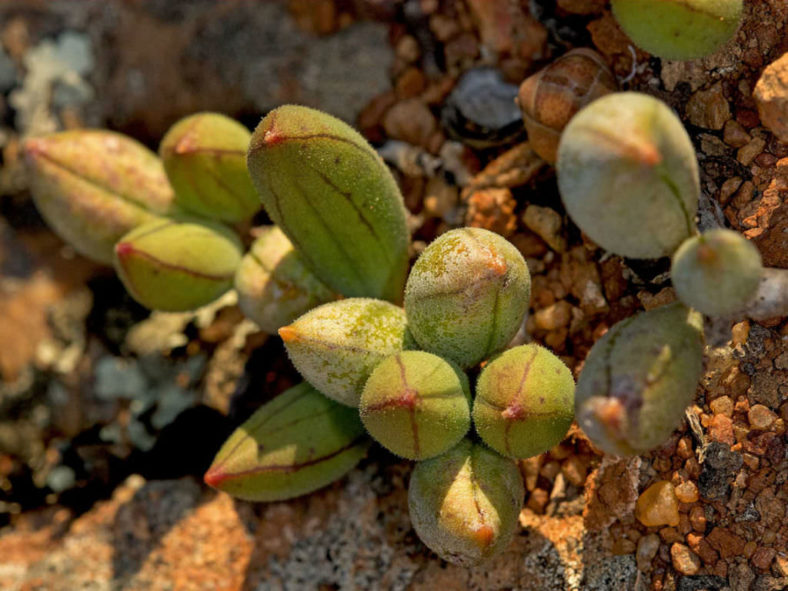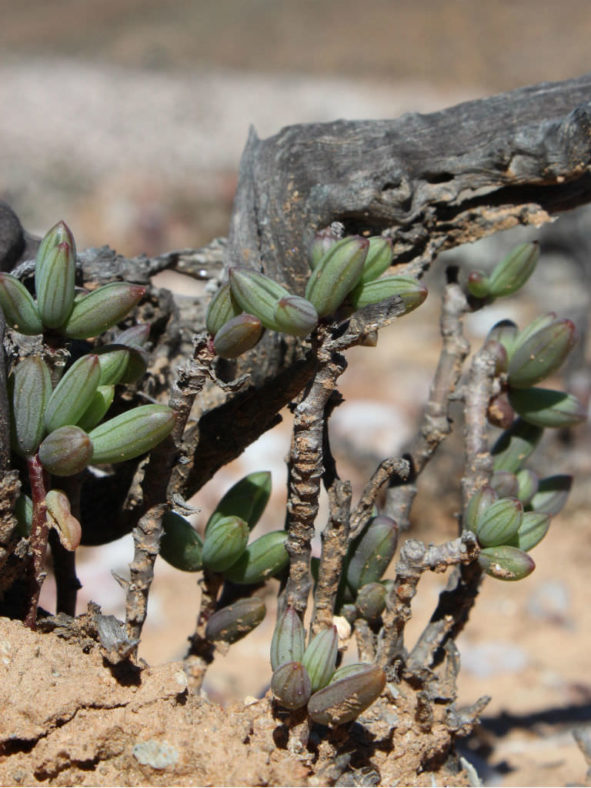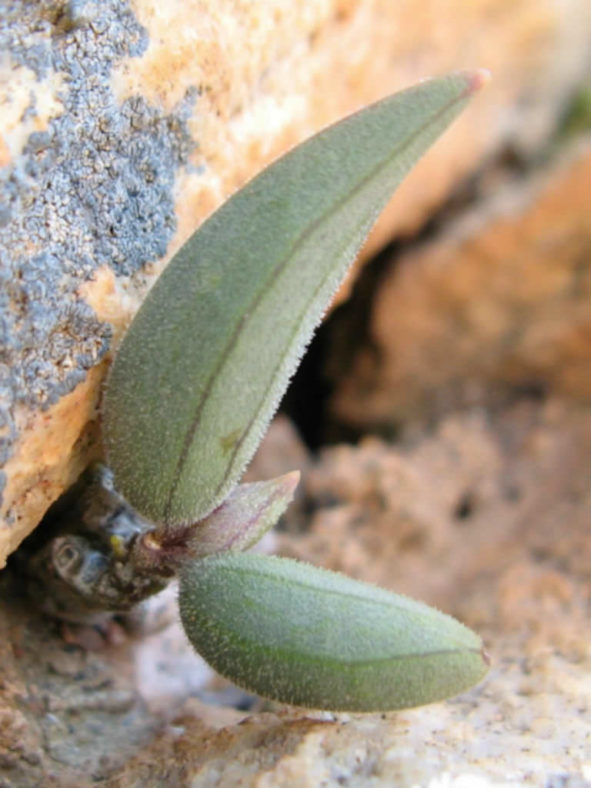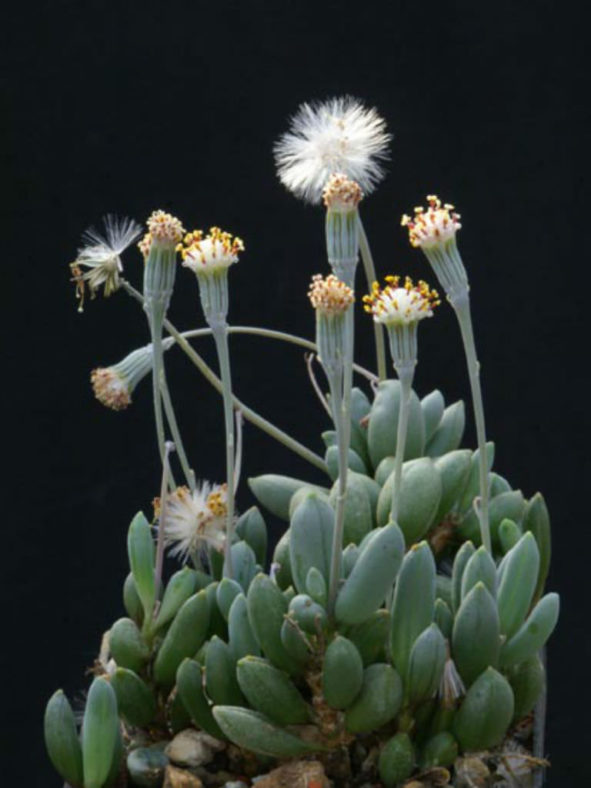Scientific Name
Curio sulcicalyx (N.E.Br.) P.V.Heath
Synonym(s)
Senecio sulcicalyx
Scientific Classification
Family: Asteraceae
Subfamily: Asteroideae
Tribe: Senecioneae
Subtribe: Senecioninae
Genus: Curio
Etymology
The specific epithet "sulcicalyx (sul-see-KAL-iks)" means "with a grooved calyx" and refers to the grooved calyx of the flower heads.
Origin
Curio sulcicalyx is native to Namibia and South Africa.
Description
Curio sulcicalyx, formerly known as Senecio sulcicalyx, is an interesting small succulent with underground tuberous roots, short branches, and thick fleshy leaves. It can grow up to 4 inches (10 cm) tall and spreads by rhizomes. The branches can reach up to 2 inches (5 cm) in length. The leaves are green with darker longitudinal lines, sometimes with short whitish hairs, measuring up to 1 inch (2.5 cm) long and 0.5 inches (1.3 cm) in diameter.
The flower heads are usually white to mauve, sometimes yellow, and appear in spring.

How to Grow and Care for Curio sulcicalyx
Light: Keep Curio plants in partial shade if outdoors, which is their preference in summer, and bright sunlight if indoors. They will grow in full shade but will become lank and leggy.
Soil: These plants prefer well-draining soil. For growing Curio indoors, using a container with at least one drainage hole at the bottom is essential.
Hardiness: Curio sulcicalyx can withstand temperatures as low as 25 to 50 °F (-3.9 to 10 °C), USDA hardiness zones 9b to 11b.
Watering: Curio plants are drought tolerant, but the soil should never be left dry for too long. They need some water during the growing season, but be careful not to leave the soil wet for prolonged periods.
Fertilizing: The members of this genus can take a bit more fertilizer than other succulents if you want them to grow fast.
Repotting: You do not need to repot Curio plants often. You can do it when the container becomes too small or shallow.
Propagation: These plants can be grown from seeds or cuttings.
Learn more at How to Grow and Care for Curio.
Toxicity of Curio sulcicalyx
Curio plants are toxic. Grow them with great care if you have children, pets, or livestock.
Links
- Back to genus Curio
- Succupedia: Browse succulents by Scientific Name, Common Name, Genus, Family, USDA Hardiness Zone, Origin, or cacti by Genus
Photo Gallery
Click on a photo to see a larger version.



